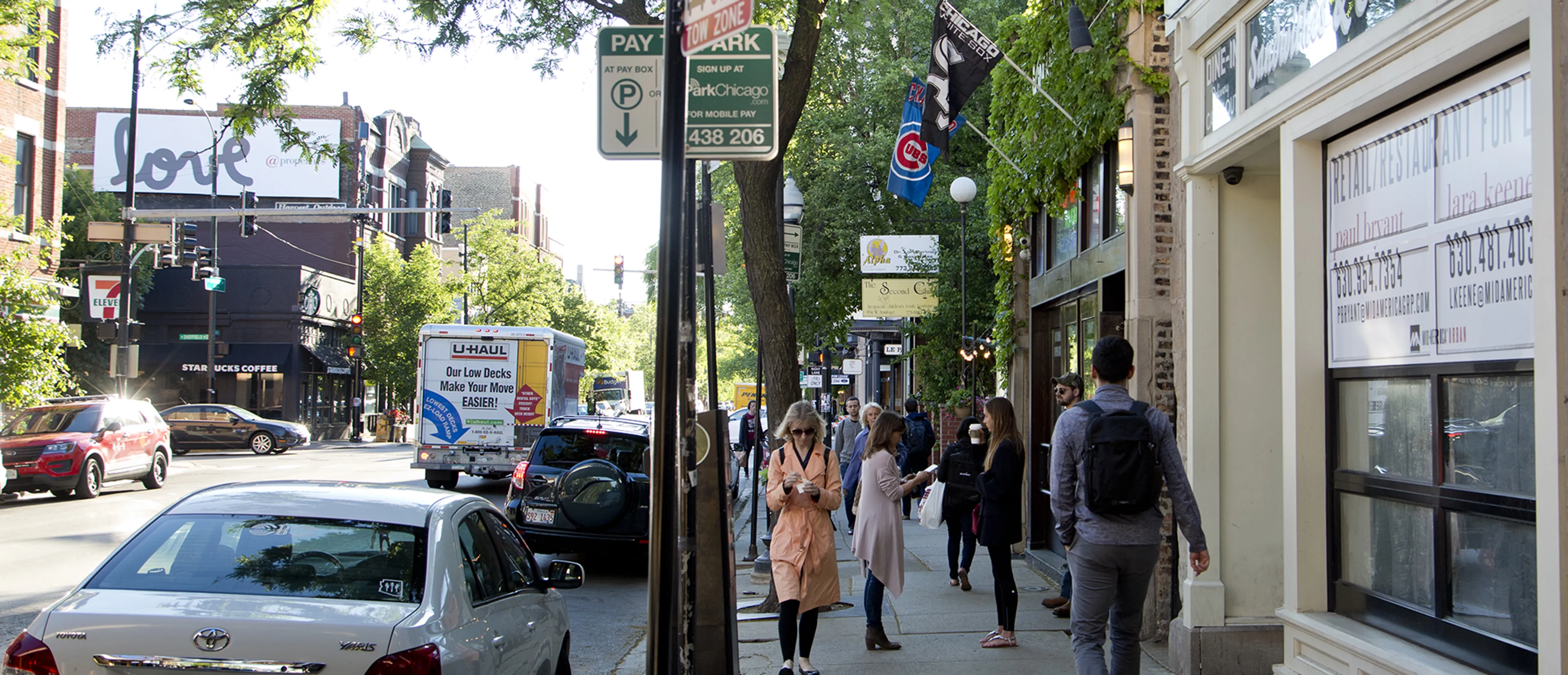History in Lincoln Park
Notorious
James W. Lewis - Second Chicago Residence
Seven people from the Chicagoland area were killed between September 29 and October 1, 1982, after ingesting Extra-Strength Tylenol caplets laced with potassium cyanide. In the wake of the murders, James W. Lewis sent a letter to Johnson & Johnson demanding one million dollars to stop the killings. He was convicted of attempted extortion on October 27, 1983, and sentenced to 20 years in prison before being paroled in 1995. Although Lewis was never charged with the Tylenol killings, he remains a suspect to this day, and prosecutors familiar with the case continue to believe he was the culprit. Lewis and his wife LeAnn fled Kansas City in 1981 after local authorities raided their house for evidence in connection with an illegal credit card scheme. On December 10, 1981, using the pseudonyms Robert and Nancy Richardson, Lewis and his wife checked into the Surf Hotel at 555 W. Surf Street. They remained at the hotel for only a week before moving into Apartment 209 at 549 West Belden Avenue.
John Dillinger Gunned Down
Notorious bank robber John Dillinger met his demise in the alley near the Biograph Theater on July 22, 1934 at 2433 North Lincoln Avenue. Headed by J. Edgar Hoover, the Bureau of Investigation, which later became the FBI, established a task force in Chicago and tracked down Dillinger's location. After seeing the film Manhattan Melodrama, Dillinger exited the theater, prompting Special Agent Melvin Purvis to light a cigar as a signal to fellow officers. Dillinger saw the agents and fled to the alley. Five shots were fired and three connected, killing the "No. 1 Public Enemy." Dillinger was pronounced dead at Alexian Brothers Hospital at 10:50 p.m.
Roger Arnold
In the late autumn of 1982, seven Chicagoland residents were killed after ingesting extra strength Tylenol caplets laced with potassium cyanide. One of the suspects in the investigation was Roger Arnold, a dockworker employed by Jewel, where tainted Tylenol had been purchased at two separate retail locations. One of Arnold’s co-workers was the father-in-law of one of the victims, Mary Reiner of Winfield, Illinois. In addition, Arnold’s ex-wife had been committed to a psychiatric ward across the street from where Ms. Reiner purchased the poisoned Tylenol. A raid of Arnold’s home turned up, among other things, a slew of unregistered handguns, ammunition, chemicals, two one-way tickets to thailand, old copies of “Soldier of Fortune” magazine, and “The Anarchist Cookbook.” Following a thorough investigation, Arnold was ruled out as a suspect. Nonetheless, he remained furious at the bartender informant who turned the police loose on him. On the evening of June 18, 1983, he approached John Stanisha, a heavyset man whom he mistakenly identified as the informant, as he was exiting a bar at 2515 North Lincoln Avenue. Arnold opened fire at point blank range and killed him. He was convicted in January 1984 and served 15 years of a 30-year sentence for second degree murder.
History in Lincoln Park
Oddities
Our Lady of the Fullerton Avenue Underpass
In April 2005, Obdulia Delgado remarked that a salt stain on the wall of the 2215 West Fullerton Avenue viaduct underneath the Kennedy Eexpressway resembled the Virgin Mary. "Within a few days, the stain was a regional sensation -- thronged, protected by police guard and sawhorses, the subject of numerous news and feature reports," said Chicago Tribune op-ed columnist Eric Zorn in a 2006 blog post. "Not long after that, the national media came calling." Although the holy salt stain waned in popularity in recent months, believers continue to place flowers by the wall, while others spray graffiti there, too. Greenhouse Theater Company produced a play about the local phenomenon in March 2009.
History in Lincoln Park
Tragedies
Haber Corporation Explosion
On April 16, 1953, an explosion at a factory owned and operated by Haber Corporation at 908 West North Avenue triggered a massive fire that claimed the lives of perhaps 38 workers and landed 35 others in the hospital. The fire escape quickly became too crowded and too hot, and employees, some with their clothes aflame, began jumping from the third story windows. The fire department spent several days combing through the rubble, searching for additional bodies, and attempting to account for the missing.
The Porch Collapse
Thirteen people died and 57 were injured in the deadliest porch collapse in U.S. history shortly after midnight on June 29, 2003. Nearly 50 people were crowded onto the third-story balcony at t713 West Wrightwood Avenue when it gave way, taking the second and first-floor balconies with it. Poor construction played a major role, as the balcony had inadequate supports, and the flooring was made of undersized lengths of wood. LG Properties, the owner, never received a permit to build a balcony. No criminal charges were filed, although LG Properties president Phillip Pappas was fined a total of $108,000. Pappas maintained that overcrowding, rather than poor construction, caused the disaster. a police report allegedly indicated that two witnesses told a paramedic they saw several people "jumping up and down" on the balconies shortly before the collapse.

